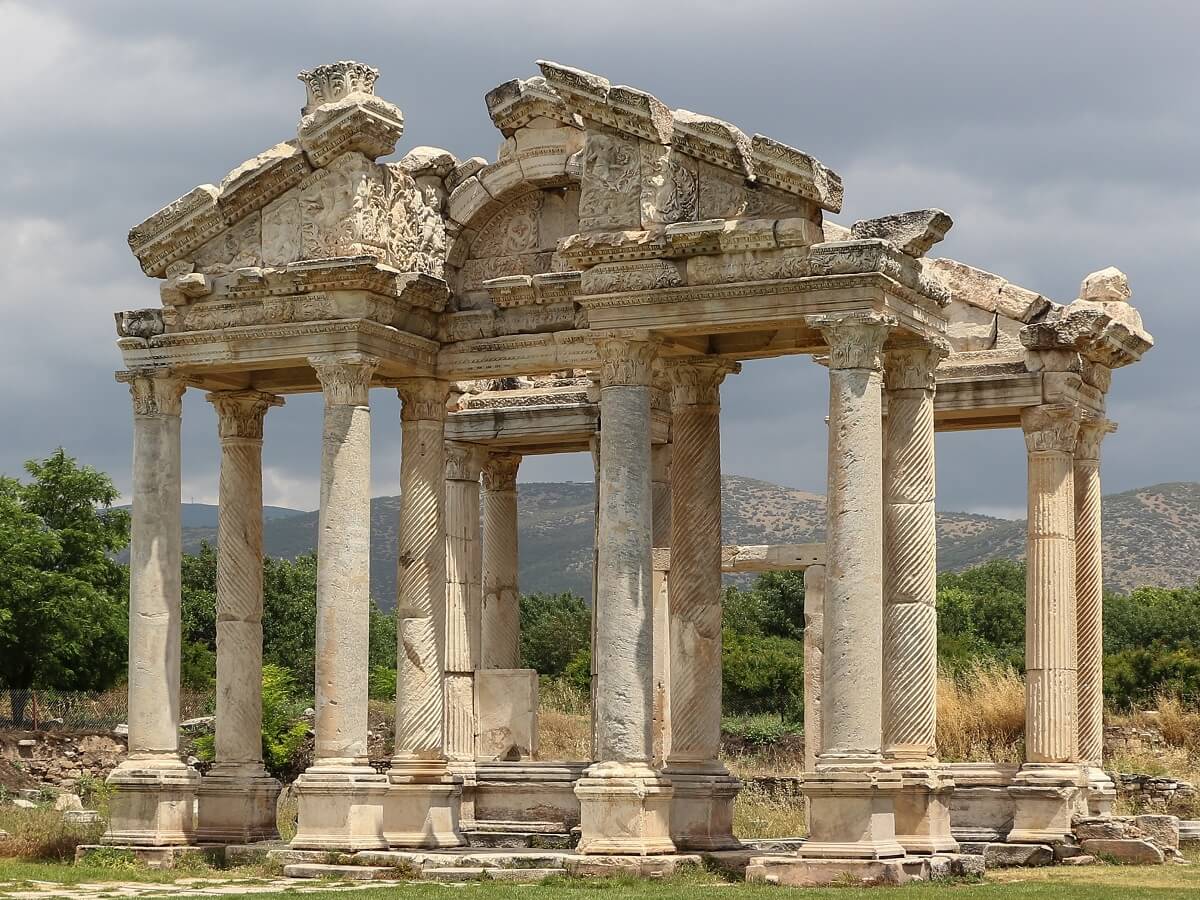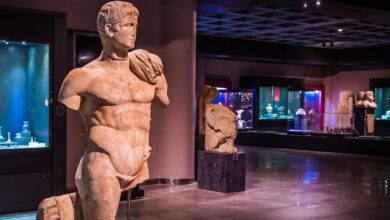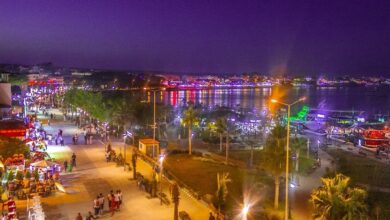Aphrodisias Ancient City and Museum – Karacasu Aydin Turkey

Aphrodisias Ancient City in Aydın Karacasu district is among the oldest ancient cities in both Aydın and Turkey. In addition, the Aphrodisias museum is one of the most admired museums in Turkey.
When you come to Karacasu, which has managed to bring the traces it has carried for thousands of years, you will almost go on a journey in history.
Aphrodisias Ancient City
Located within the borders of Geyre District of Aydın, Karacasu, the Ancient City of Aphrodisias is one of the oldest historical buildings of the region. The ancient city, which was built on a plateau at an altitude of approximately 600 m above sea level, got its wealth from the marble quarries located on the skirts of Babadağ in the northern part of the city.
It is estimated that the ancient city of Aphrodisias, located approximately 13 km from the Karacasu district center, was built towards the end of the 1st century BC as a result of excavations and research studies. The Ancient City has come under the rule of many civilizations and has survived to the present day. Due to the fact that the necessary promotional activities for the ancient city of Aphrodisias could not be fully carried out, many tourists, both domestic and foreign, leave the district without visiting this historical building, which is thousands of years old.
In the Ancient City, there is the Bishop’s Palace, which is open to the public with a capacity of 14 to 15 thousand people, as well as a theater with a capacity of 7000 people. Boluterion Assembly Building, which is estimated to have been built in the 200s BC. There is the Temple of Aphrodite, which is shown as the focal point of the ancient city, and the stadium with a capacity of approximately 30 thousand people, which is the best designed and preserved in the world.
In order to enter the ancient city of Aphrodisias, which accepts visitors between 09:00 and 20:00 in summer and between 08:30 and 17:30 in winter, you need to pay an entrance fee of 30-40 TL. Visitors with a museum card can enter free of charge.

Aphrodisias Ancient City Museum
The museum, located within the borders of the ancient city, was opened in 1979. Only historical artifacts excavated from the ancient city are exhibited in the museum.
Sculptures with or without heads, busts, coins from Rome and different empires, gold and works produced by sculptor masters are exhibited in the museum. You should definitely not leave the museum without seeing the beauty of the Aphrodite statues. There are visible architectural differences between the statues of Aphrodite and other statues.
Aphrodisias Ancient City Museum: The museum, which opens at 08:00 in both summer and winter months, closes at 19:00 in summer and 17:00 in winter.


Aphrodisias Stadium
Located approximately 14 km from Karacasu district center, Aphrodisias Stadium was the largest, best preserved and best designed stadium in the world. Aphrodisias Stadium, which is 270 meters long and has a capacity of 30,000 people, was a sports complex where many sports such as discus and javelin throw, long jump were held in the 1st century AD.
In the 1st century AD, games such as long jump, discus and javelin were played in the stadium. In 400 AD, wild sports that shed blood were performed. People from local and surrounding cities watched gladiators and wild animals fight here.

Temple of Aphrodite
It is known as the focal point of the ancient city. When the Temple of Aphrodite started construction in the 1st century BC, columns were added around the temple in the 2nd century AD. In 500 AD, the temple was converted into a Christian church.
Sculptor masters in the ancient city created important works at this point. You can see these products produced by sculptor masters in the temple.
You should definitely watch the sunset around the Temple of Aphrodite. The sunset around the temple, which is the most important point of the city, is more perfect.

Hadrian’s Bath
Hadrian’s Bath is one of the largest institutional structures in the Ancient City of Aphrodisias. Hadrian’s Bath, which reflects Roman architectural features until today, was built in honor of Hadriana, the Roman Emperor of the time.
There is a garden in front of the bath, which is protected by the walls. In the northern part, there is a fountain made with fine stone carvings. When you examine the fountain in detail, it is possible to see the architectural features and traces of the Roman period. You can visit Hadrian’s Bath both in summer and winter.

Sebasteion Temple

Aphrodisias Amphitheatre
Council House (Bouleuterion)
The Council House (Bouleuterion) is a semicircular building resembling a theater building. It has a roof in its original form and has a seating capacity of 1750 people.





